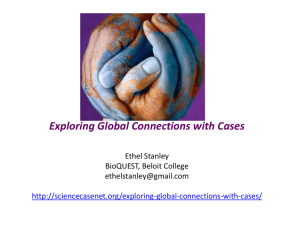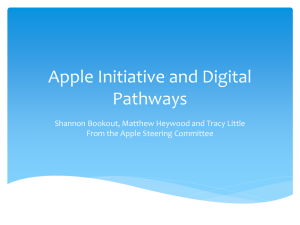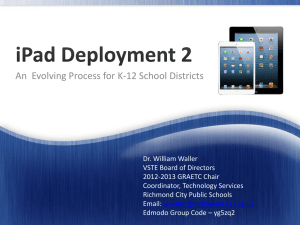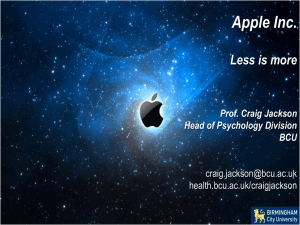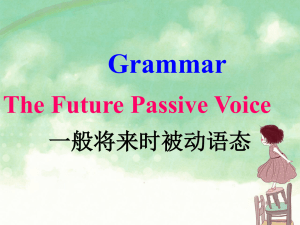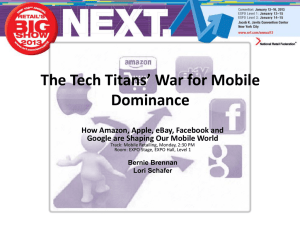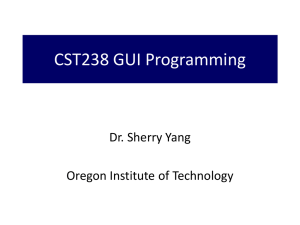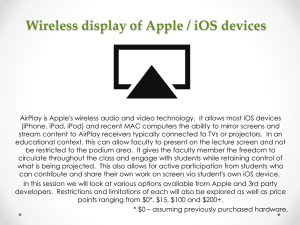Apple`s Advertising Strategy
advertisement
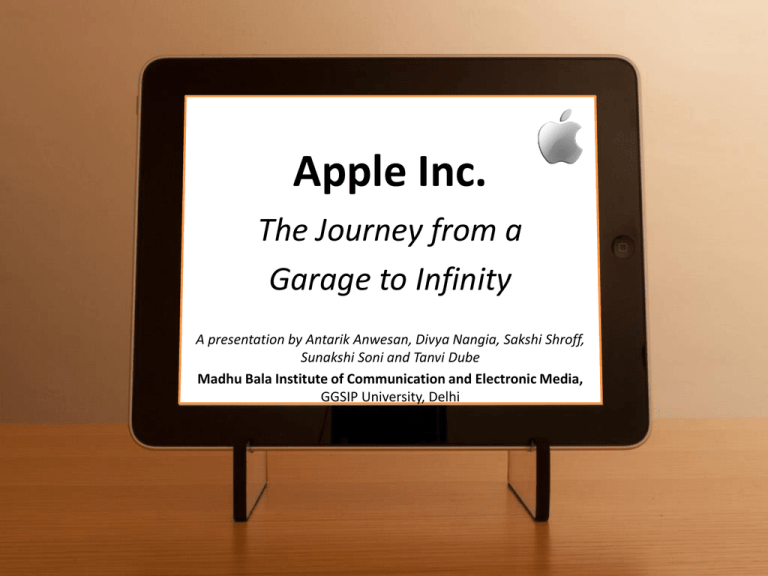
Apple Inc. The Journey from a Garage to Infinity A presentation by Antarik Anwesan, Divya Nangia, Sakshi Shroff, Sunakshi Soni and Tanvi Dube Madhu Bala Institute of Communication and Electronic Media, GGSIP University, Delhi About Apple Marketing Strategy The Man behind Apple SIMPLE IS BETTER!! MARKETING STRATEGY I. Brand Loyalty II.Effective Advertisement III.Ignore your Critics IV.Turn the Ordinary Into Something Beautiful V.Justify your Price VI. Communicate in the Language of your Audience VII. Extend the Experience VIII. Become the Name Apple’s Own Ad Agency • The Media Arts Lab is a London advertising agency like no other. • Based at a discrete address on Charing Cross Road, it is thought to employ more than 50 people but has only one client. • Finding information about the media arts lab is not easy – If you go to its website, there is just a holding page with no mention that this is even an ad agency. The only clue that this might be a business of some significance is that there are phone numbers for offices in London, Los Angeles, Tokyo and Beijing. • Amazingly, there is no other detail, no postal addresses, no names of staff - and certainly no mention of its client. • The reason is that this client is surprisingly secretive despite being one of the world's biggest and most popular brands, famed for introducing the iPhone, iPad, iPod, Mac and more. • But Apple could also behave in ways that other consumer brands would not dream of doing - by being arrogant and secretive, not using an external PR agency, sometimes not bothering to respond to journalists, and so on. http://mediaartslab.com/ IT’S DIFFERENT!! • Two characteristics made handling Apple's advertising utterly different from any other account: an obsession with secrecy and an absolute autocracy • Steve had the same relentless focus on detail on communications as he did on his products. Every letter, every TV ad, every poster that ran anywhere in the world would be OK'd personally by Steve. • Ultimately, what stands out about Apple's marketing is that so often it is the product that is at the heart of the campaign. That has made for deceptively simple advertising that celebrates the particular device, without the use of gimmicks. The product almost sells itself - think, for example, of the iPod ads that featured just dancing silhouettes and pumping music. APPLE RETAIL STORES • Ron Johnson, the former Senior Vice President for retail at Apple who just left to run JC Penney this month, worked alongside Steve Jobs to build the Apple Store to obvious success while many brickand-mortar stores are struggling due to the growth of e-commerce . • Each Apple Store allows you to test drive any product and load it with your own apps and content, all while an employee guides you through the process — regardless of whether you plan to make a purchase. Johnson said that he took away commission incentives from the sales associate position so employees would focus on helping customers find the right product — "even if it's not an Apple product." I campaigns Advertising strategy Apple focused on many categories while considering its advertising strategy. It took into consideration the location of the people, the usage and demand for certain technological updates but just like its first product in the beginning every strategy boosted after a minor setback. “…because the customer doesn’t know what to expect next, until we show it to them.” -Steve Jobs Think Different • Apple’s one of the major, most successful advertising slogan was “Think Different”. • It was started in 1997 for Apple Computers by the Los Angeles office of advertising agency. • The words "think different" were created by Chiat/Day art director Craig Tanimoto. • The text of the various versions of this commercial were written by Rob Siltanen and Ken Segall. Television commercials Significantly shortened versions of the text were used in two television commercials, known as "Crazy Ones" The one-minute commercial featured blackand-white footage of 17 iconic 20th century personalities. They were: Albert Einstein Bob Dylan Martin Luther King Mahatma Gandhi The commercial ends with an image of a young girl opening her closed eyes, as if making a wish. • The thirty-second commercial was a shorter version of the previous one, using 11 of the 17 personalities, but closed with Jerry Seinfeld, instead of the young girl. • Another early example of the "Think Different" ads was on February 4, 1998, months before taking the colours out of the logo, where a commercial aired with a snail carrying an Intel Pentium II chip on its back moving slowly, as the Power Macintosh G3 claims that it is twice as fast as Intel's Pentium II Processor. Steve Jobs said this to explain the strategy behind the slogan “The minute that you understand that you can poke life and actually something will, you know if you push in, something will pop out the other side, that you can change it, you can mould it.” Print Advertisements Two steps: • Initially they were traditional showcasing computers or electronics with the slogan. They were published in magazines like Newsweek and Time. • Gradually they featured a portrait of one historic figure, with a small Apple logo and the words "Think Different" in one corner, with no reference to the company's products. Posters Promotional posters from the campaign were produced in small numbers in 24 x 36 inch sizes. They featured the portrait of one historic figure, with a small Apple logo and the words "Think Different" in one corner. The posters were produced between 1997 and 1998. There were at least 29 different Think Different posters created. In addition, around the year 2000, Apple produced the ten, 11x17 poster set often referred to as "The Educators Set", which was distributed through their Education Channels. The "Think Different" Campaign proved to be an enormous success for Apple and therefore used iMac personal computer and later the Mac OS X operating system. The spot would garner numerous awards and accolades, including the 1998 Emmy Award for Best Commercial and the 2000 Grand Effie Award for most effective campaign in America. Since late 2009, the box packaging specification sheet for iMac computers has included the following footnote: Macintosh Think different. Some amazing facts from the life of Simplicity is the ultimate sophistication! Ever tried opening an Apple product? “End-to-end control in everything” What’s this? In a world where computers were as big as a room and they worked on command prompt, how would you react if you are shown a computer that you can hold in your hand? The Pepsi Challenge Do you want to spend the rest of your life selling sugared water, or do you want a chance to change the world? iMac, iPod, iPhone, iPad, iBook Why the obsession with ‘i’? When the iTunes Store was initially launched in April 2003, it was estimated that one million songs would be sold in six months. No doubt, One million songs were indeed sold. But not in six months. It happened in just six 'days'! But why iTunes??? Which came first? The iPhone or the iPad? But the idea? Why white? Second last question: Steve Jobs had no knowledge of technologyhardware or software. Then, how did he bring about Apple? Simple, he knew how to talk!


